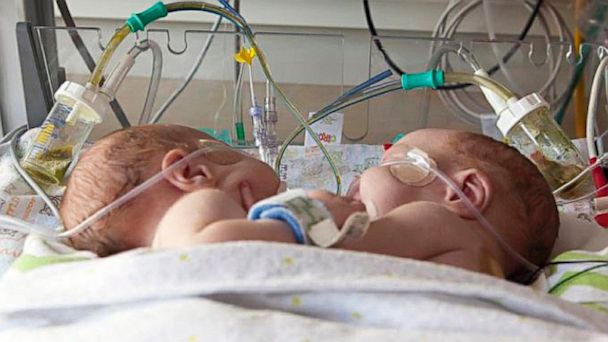Conjoined Twins Explained
A pair of conjoined twins, Owen and Emmett Ezell, was successfully separated after a nine-hour surgery at the Medical City Children's Hospital in Dallas hospital last Saturday.
The complicated procedure overseen by multiple doctors and surgeons was impressive both because it was successful and because the twins were male infants.
Approximately 70 percent of conjoined twins are female.
Additionally, conjoined twins are incredibly rare and occur at a rate between one in 50,000 live births and one in 200,000 live births.
In most cases conjoined twins are stillborn.
Parents Relieved after Twins' Successful Separation
Holly Hedrick, a pediatric and fetal surgeon at the Children's Hospital of Philadelphia, said merely bringing a pregnancy with conjoined twins to full term was a major undertaking.
"The majority [of these pregnancies] are going to be stillborn if they carry the pregnancy to term," said Hedrick. "Just getting them to being close to term is an accomplishment."
The process that results in identical twins becoming conjoined is not entirely understood. According to Hedrick , the most common theory is that when a single embryo splits into two, the cells do not fully separate. As a result, the identical twins that develop in the womb are also conjoined on some part of their body.
Conjoined twins are usually classified in three distinct ways. The vast majority, approximately 75 percent, are conjoined along their abdomen or upper chest, which is called thoracopagus.
About 23 percent are joined at the hips or pubic bone, the condition is called pygopagus when they are joined at the buttocks or perineum and ischiopagus when they are joined at the pubic bone.
The rarest condition - about 2 percent - is craniopagus, with the twins joined at the head.
Parents of Conjoined Twins Tell Their Story
The survival of the twins and the possibility of separation depends on if the twins share vital organ material. Hedrick said that the main focus is almost entirely on the heart.
"If their hearts are joined it's very, very hard to survive," said Hedrick.
According to the Center for Fetal Diagnosis and Treatment at the Children's Hospital of Pennsylvania, there have been no known survivors of conjoined twins whose hearts were conjoined.
The Ezell twins were joined along their abdomen and shared a liver and part of their intestines, they did not share a heart.
For conjoined twins that survive past infancy but cannot be separated, Hedricks said the main concern was that if one twin contracts an illness it can sicken the healthy twin as well.
However, with increased medical surveillance during pregnancy and advancements in neonatal surgery, Hedricks said women pregnant with conjoined twins have far more options and more information to help them decide whether or not to bring the pregnancy to term.
"I think it has made all the difference in the world," said Hedrick of medical advancements in pregnancy monitoring."Years and years ago, they might think they had twins and not have [any idea they were conjoined.]"
